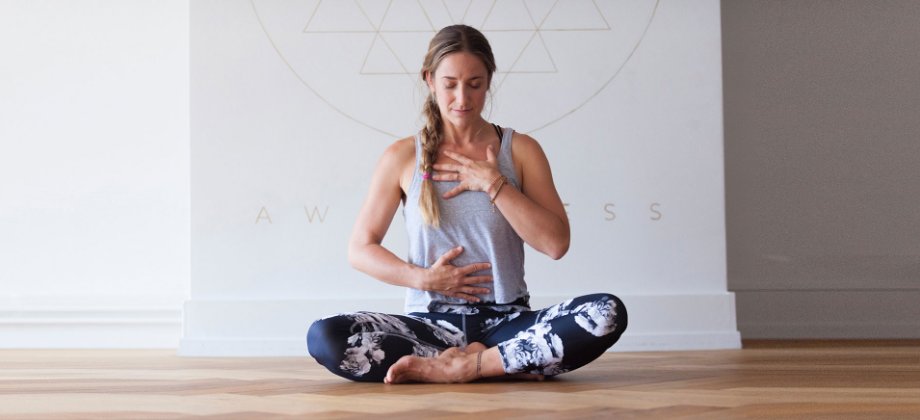
How to Start Collaboration Projects with Other Yoga Teachers
We got into our line of work because we wanted to make a difference in people’s lives. We wanted to help our yogis move again, discover the power of yoga, and its overall effect on us as a whole. What do we do? We study the practice, we broaden our horizons to acquire a wider reach–but we are also very human. We don’t have the lifespan to learn everything. Nevertheless, our limitations shouldn’t stop us from trying to provide our services to those we encounter. By combining efforts with our colleagues the possibilities are infinite.
Collaborative programs and workshops with other teachers is nothing new. It’s the combinations of lessons that give every yogi a well-rounded class. While it seems like a simple concept to pull off, it’s not without its challenges. Yoga as a practice may be easy-going and tranquil, the business of yoga requires just as much dedication as any job. In this article, we will take you through some first steps on collaborating with other yoga teachers and some mindset tips to help you in your team teaching ventures.
1. What skills and knowledge do you need and who do you have on hand?
Let’s say you come up with an awesome idea, but you can’t do it alone. You decided that this project will be a collaboration between you and some colleagues. What skills will you need? Who are these yoga teachers? Are they easily reachable or would you have to build a connection with them first? Building trust with fellow yogis take time. Knowing who you choose and need for your dream team takes strategy. Before you start making some calls, prepare what you want to say. It doesn’t matter if these fellow teachers are your friends or people you’ll need to make the first contact with. You will need something concrete to show.
As Sir Arthur Quiller-Couch said, “To create a masterpiece, you must murder your darlings.” This means that changes will happen along the way.
2. Your Sales pitch, proposal and discussion of roles
This next point boils down to your sales pitch and proposal. You will have to sell the collaborators on your idea because it is a commitment for them as well as for you. Apart from your proposition, your fellow teachers need to know what benefits they will get from this business journey. Show that you have done your research and that you have a realistic but optimistic prediction of your outcomes. Play to your strengths. Most importantly, you’ll need to agree on your sales target and the profits you expect to earn after you close the event. Now, let’s say that you have formed your team. All of you need to layout each one’s job in the plan. It’s quite a change when you are working with others. Everyone has different ideas, they want to be heard, all of you have to be clear on their assignments so no one accidentally tramples on the others’ scope of practice.
3. Setting your status update meetings, and keeping communication
Once all of your roles are discussed, it’s time to put your project together. Keep lines of communication open with each other. Help each other as needed and cultivate an open environment so that each one feels supported. All of you are working for a common outcome. In this day and age, Zoom and Google hangouts are revolutionary tools in keeping up with your online meetings. Preparing a status report for each task accomplished is vital in your progress. It shows each team member where they are at. Be as detailed as possible. If you need to convey your actions through voice so that there is no misinterpretation, use an online platform to help you. To keep track of all the activities, you could use productivity apps like Trello to organize everything. In this day and age, most forms of communication are via the internet. So, don’t be afraid of new tech. Use them to your advantage. They can really make everything that much easier.

4. Setbacks, tweaks and changes will happen
While all of you are working towards the same goal as a group, you are still a set of independent individuals–all with ideas constantly popping up in each one’s head. At some point, someone will see a hole in the plan which may set you back. In another moment, your colleague will suggest something that improves the plan. As Sir Arthur Quiller-Couch said, “To create a masterpiece, you must murder your darlings.” This means that changes will happen along the way. No matter how perfectly you created a module, if it doesn’t serve the primary purpose of your project, delete it. Expect evolution and prepare contingencies. Don’t forget that you formed your group because you thought you worked well together. This is what it looks like.
5. Launching and marketing your product.
Any project takes time. If you have a retreat or workshop that starts at a certain date, the time you have before that is to market, prep, and most of all–to create an image as both team and individual. Potential yogis need to know who you are and what they are signing up for. What does each of you stand for? What have you put together? How does each individual in the team contribute? By creating online content, all of you can get your message out before D-day. Use the time to create challenges on social media, maybe write blog posts, stories about your lives as yoga teachers, promote your product and reach your target number of sales.
Let’s recap!
When you set a collaborative project with other yoga teachers, you will need to be clear on what skills you’ll need to make this venture the best it can be. Who are the people in your sights and are they available? Plan it out well because you will need to pitch the idea to your desired teammates. They are committing to this project just as much as you. Project the image that you can answer all their questions upon presenting your idea. They will want to know what’s in it for them in terms of profit or benefits. For example, “After completion collaborators will have higher exposure in an international scene and are projected to earn X amount.” Set everyone’s roles and explain why. Everyone has a strength to use and you can’t be there for every part of the process. Use technology to your advantage. This is especially true when colleagues are in different parts of the world. Have room for change. Not everything will run smoothly. Being open to your project’s evolution as it progresses, creates a better environment in a group. The time you have before your launch is the time you will use to create content to market your event. It’s not all about creating posters, you’ll need more substance as individuals to build your images. Online Content is required so your potential yogis know who you are to become conversions. Don’t worry about creative blocks. You have each other to lean on for support on that.
Running a yoga business is not different from running any other business. A collaborative yoga project may actually help in pushing you to see your business this way. It forces you to learn the terms, learn from each other, and from the outcome of your event. All of you will be nudged into using the jargon, the apps coupled with the analytics to apply them to your endeavour as teachers/entrepreneurs.






